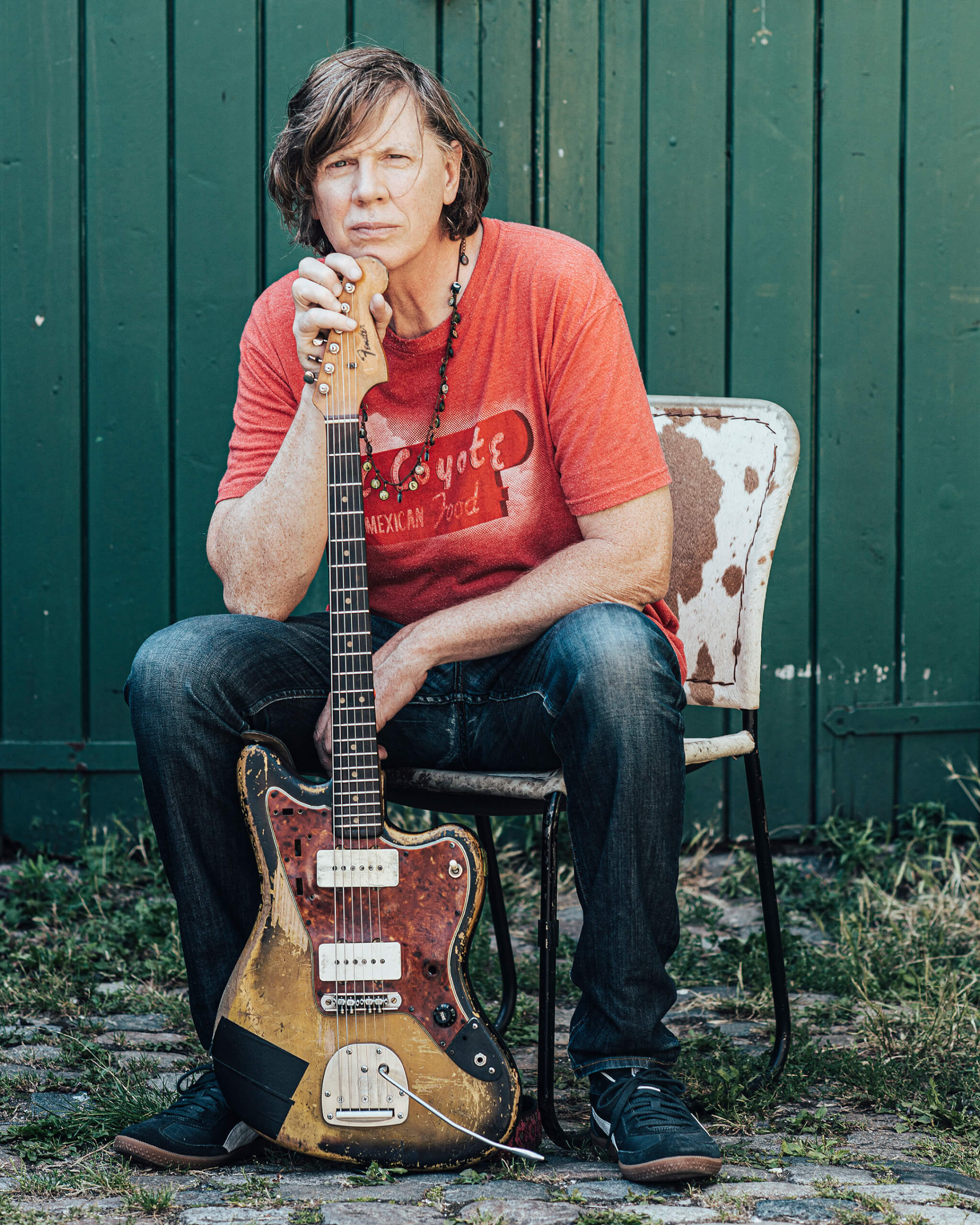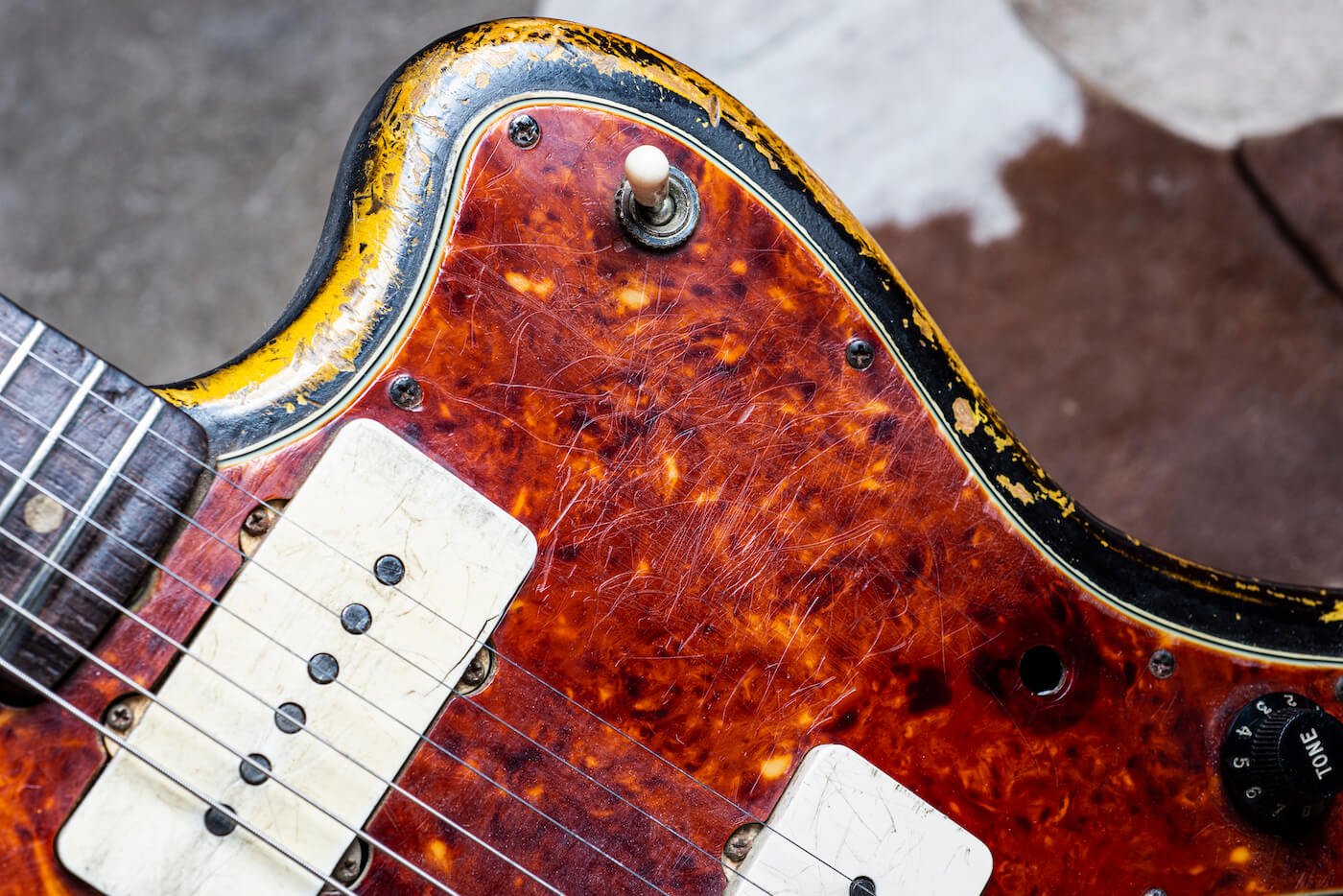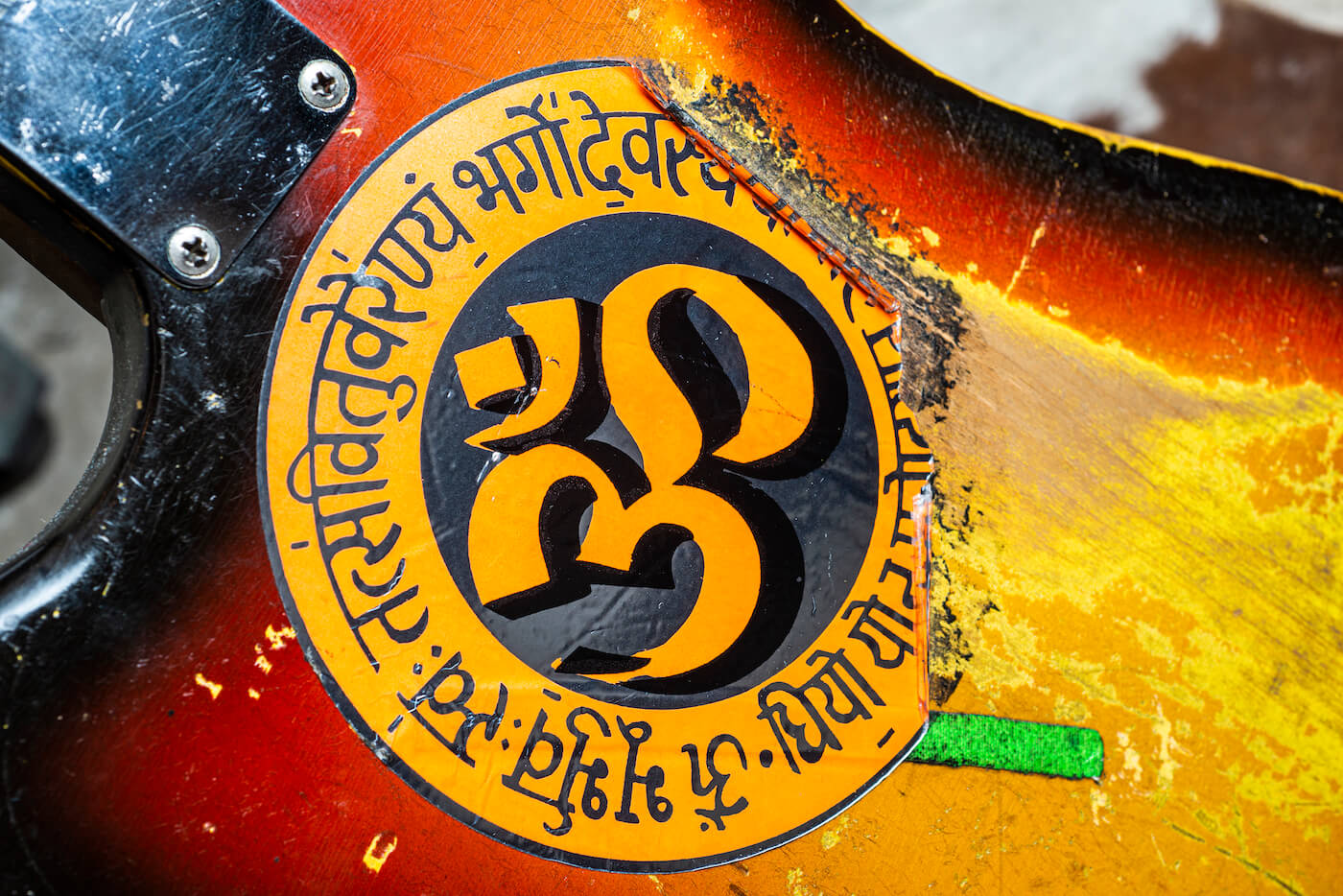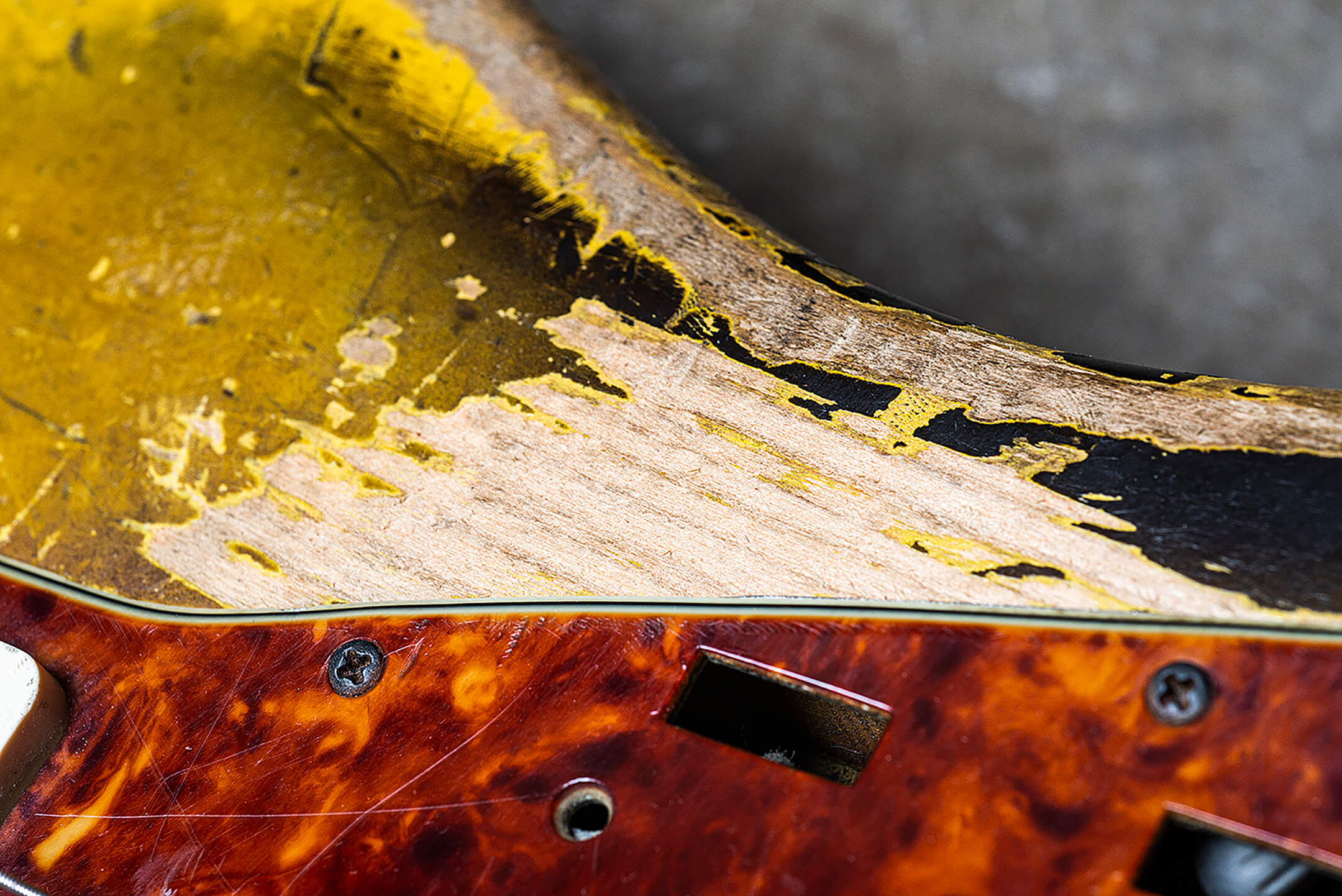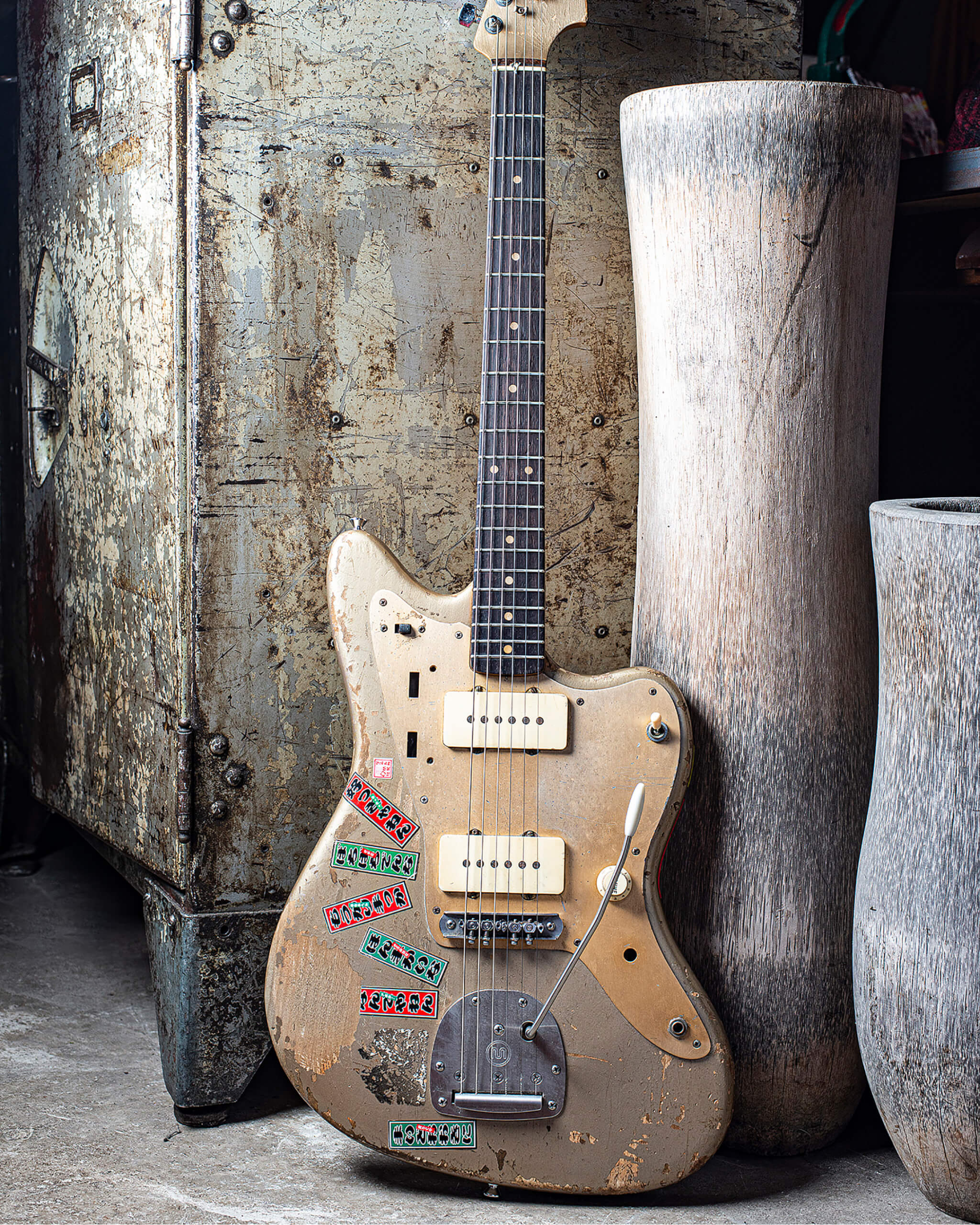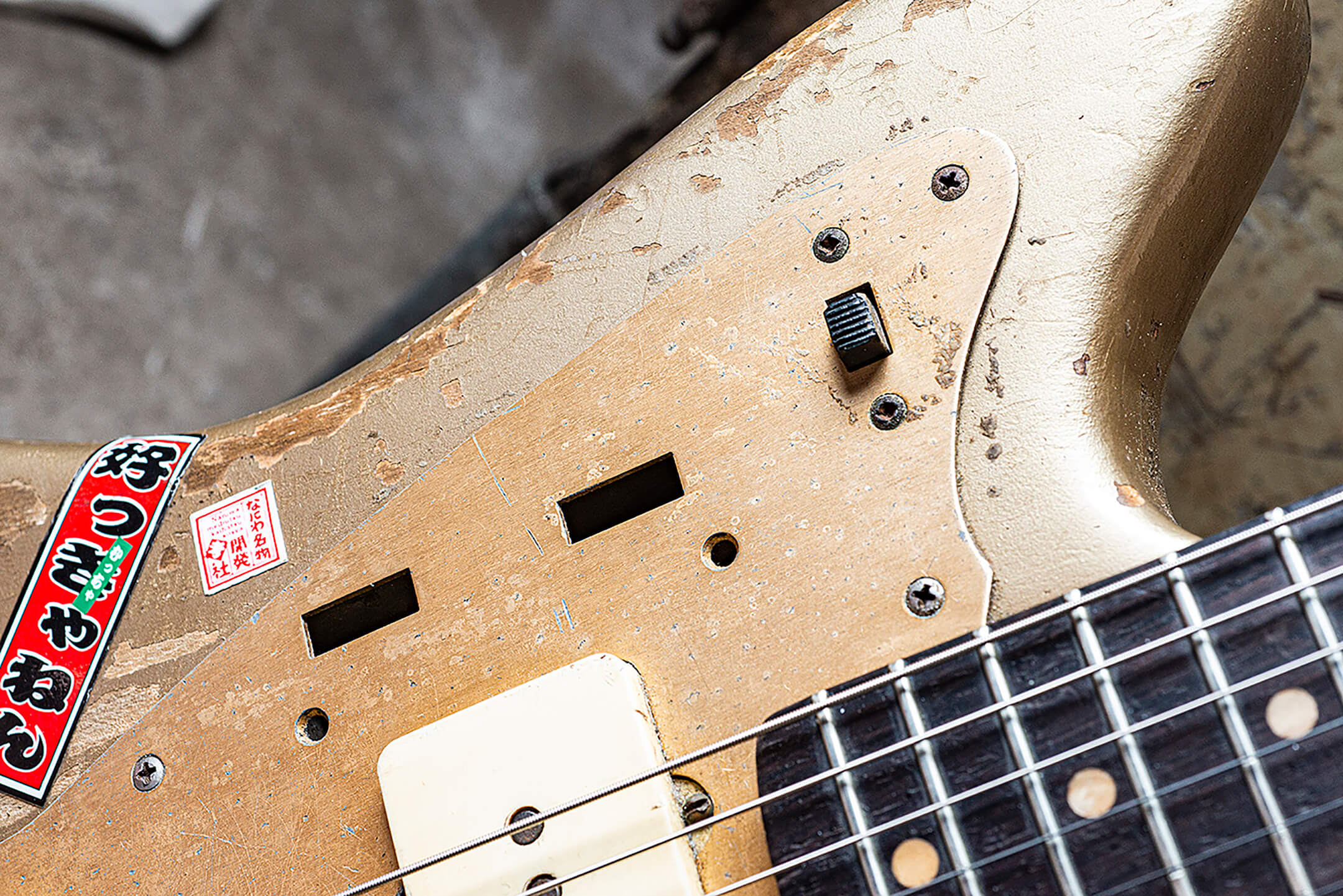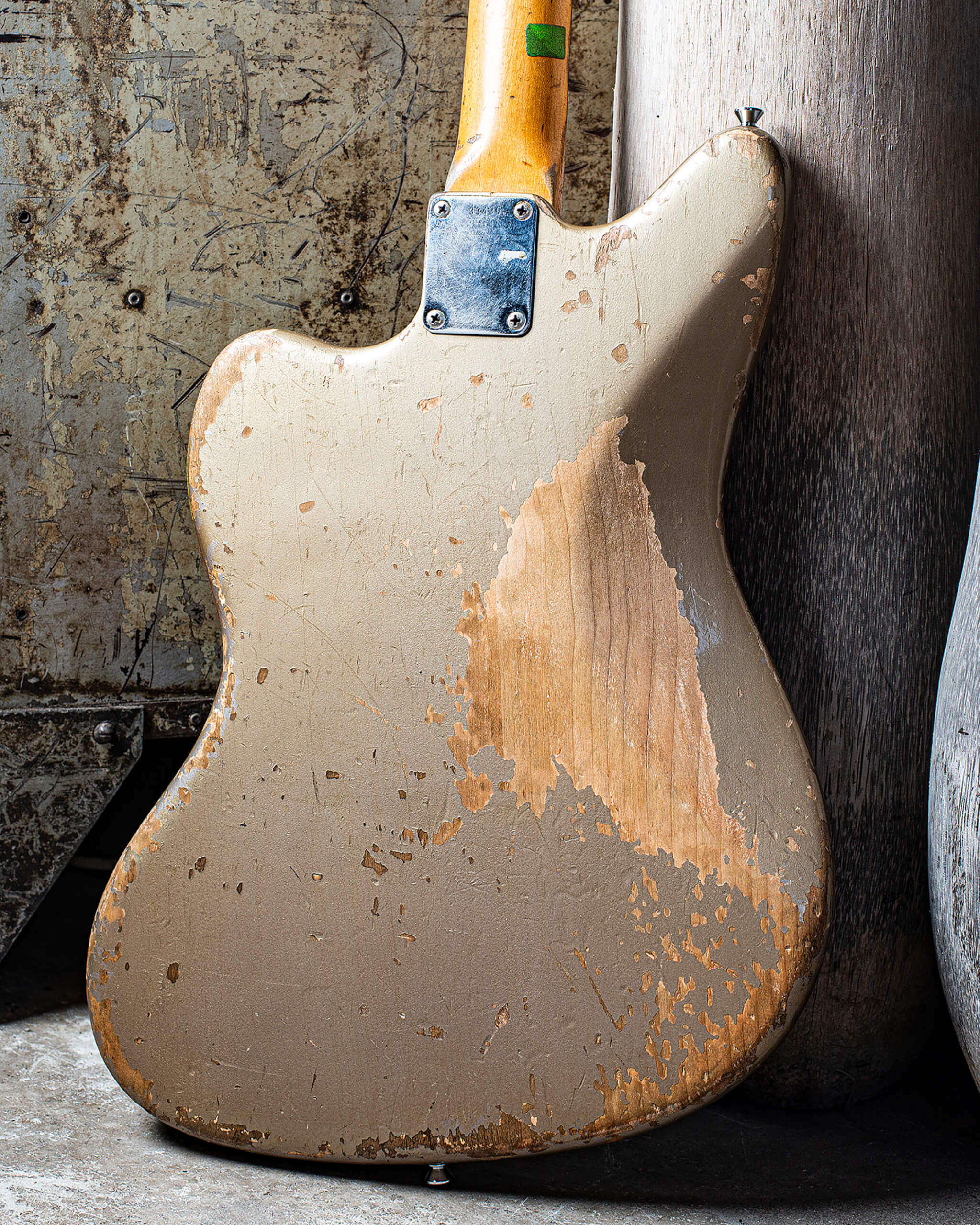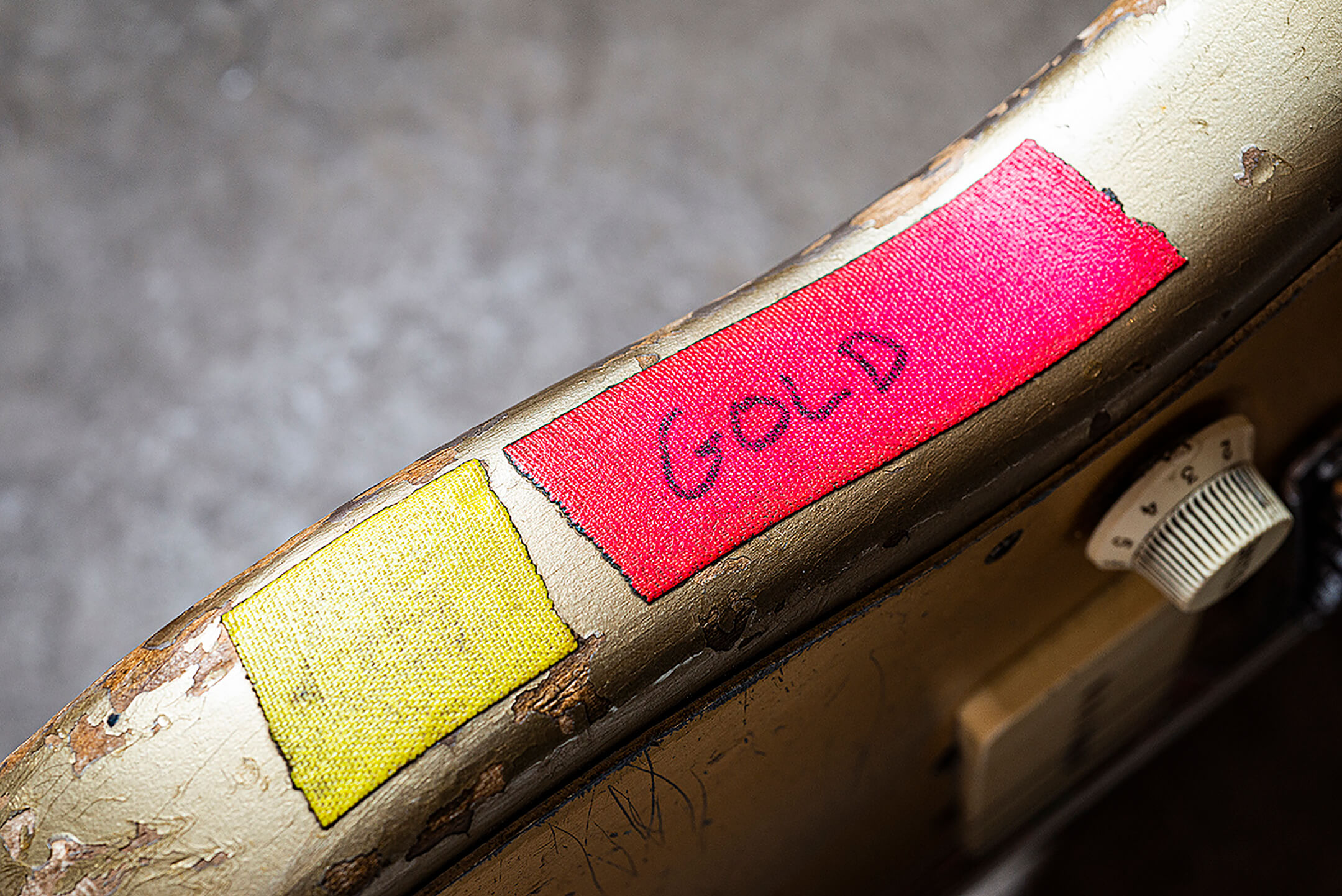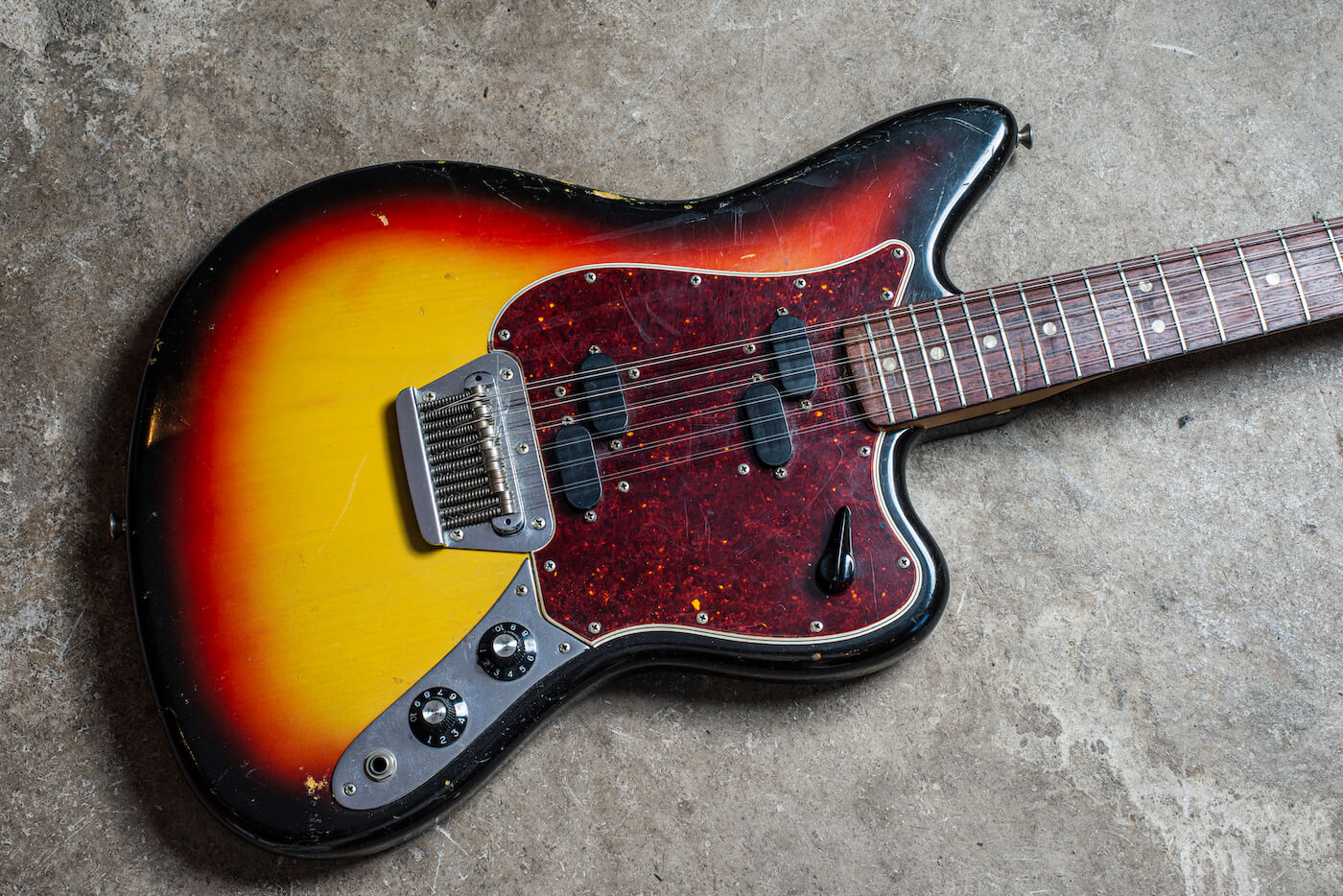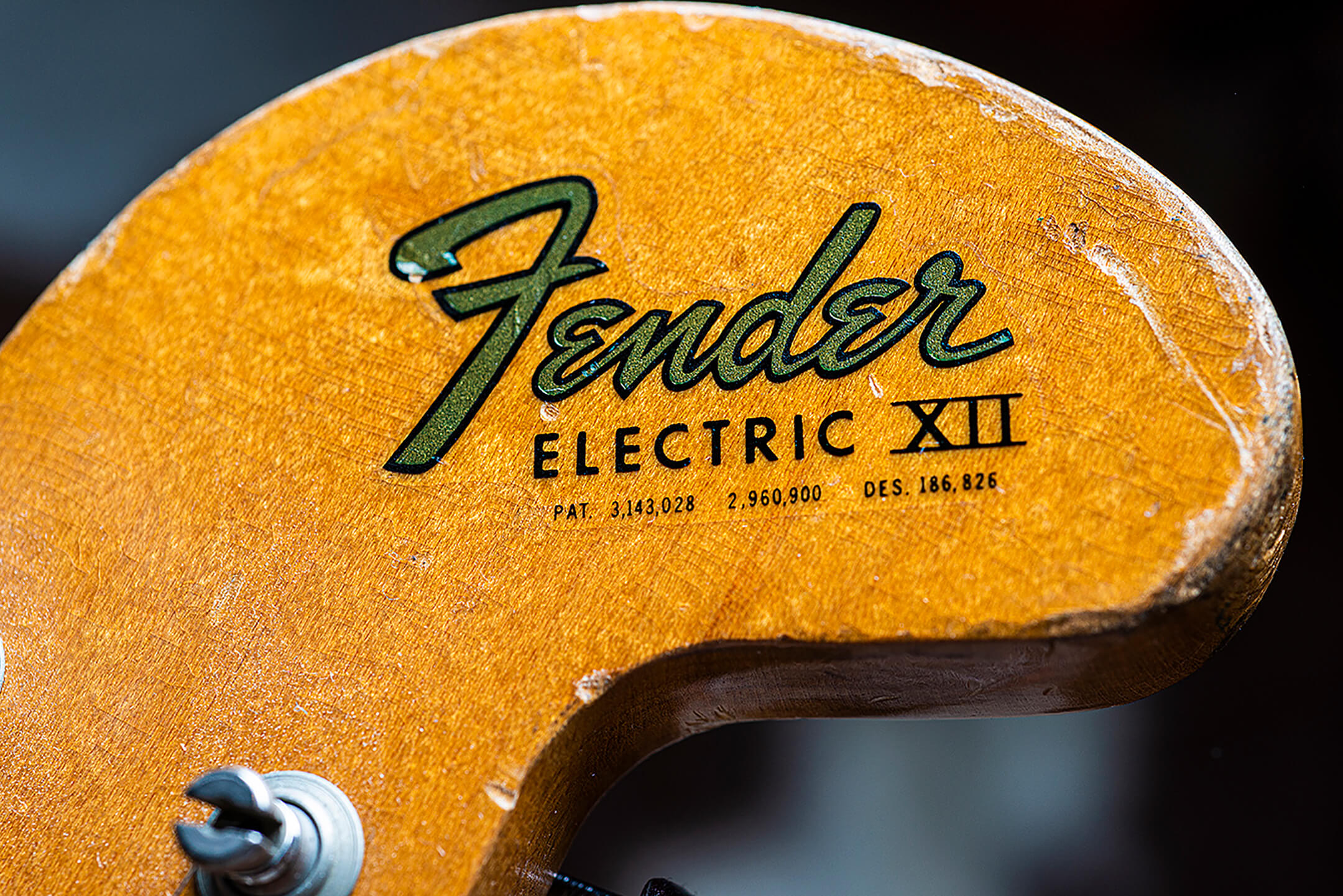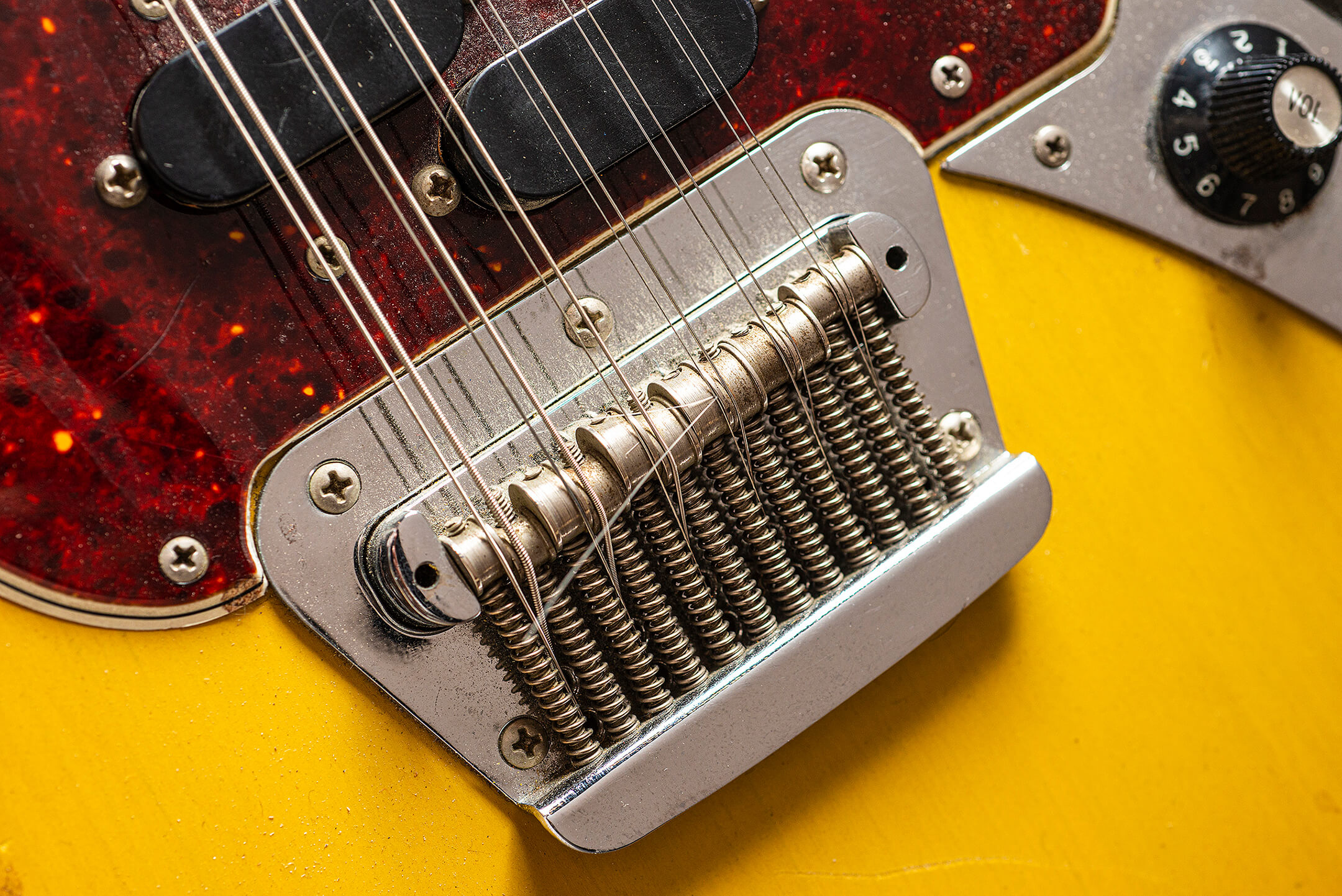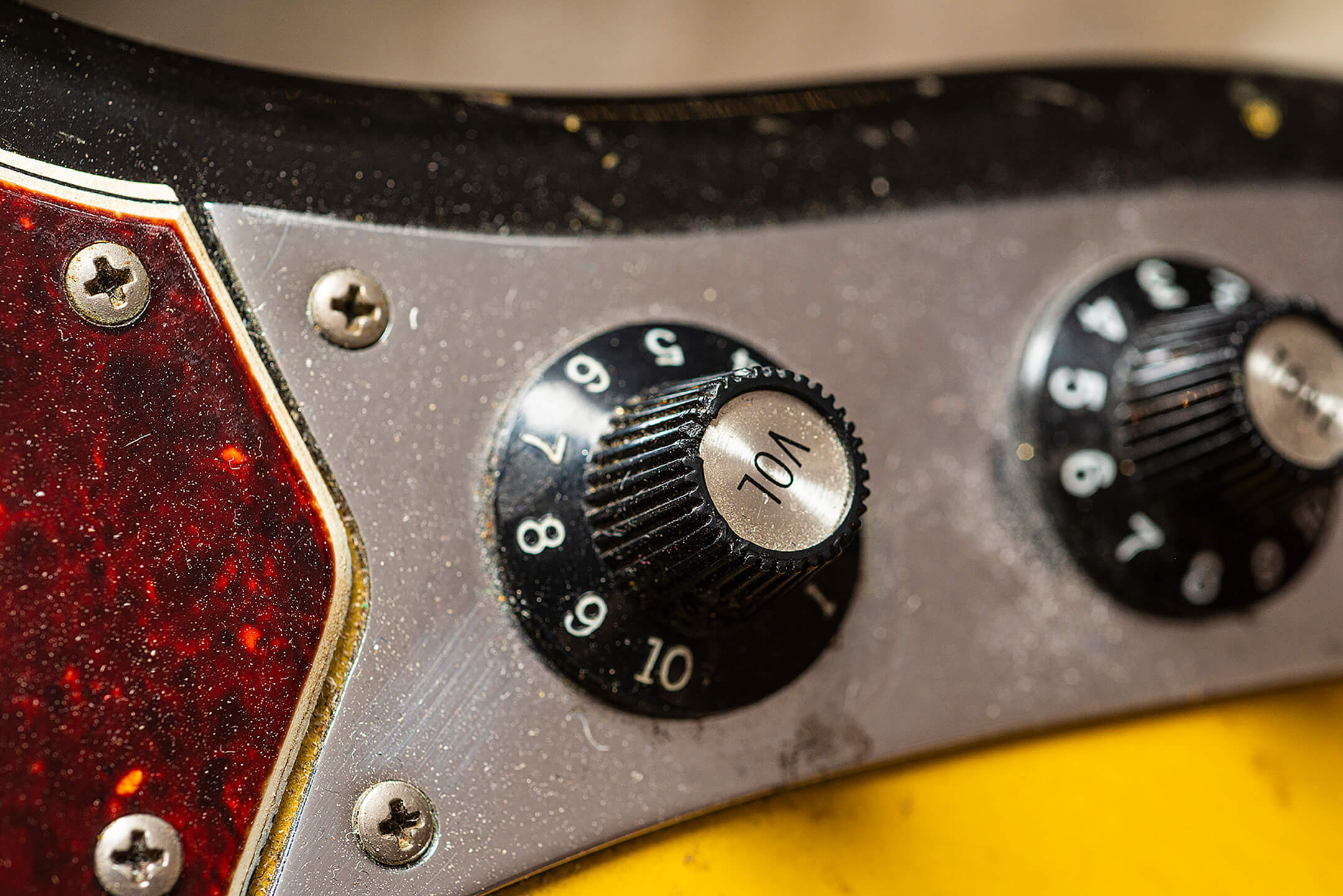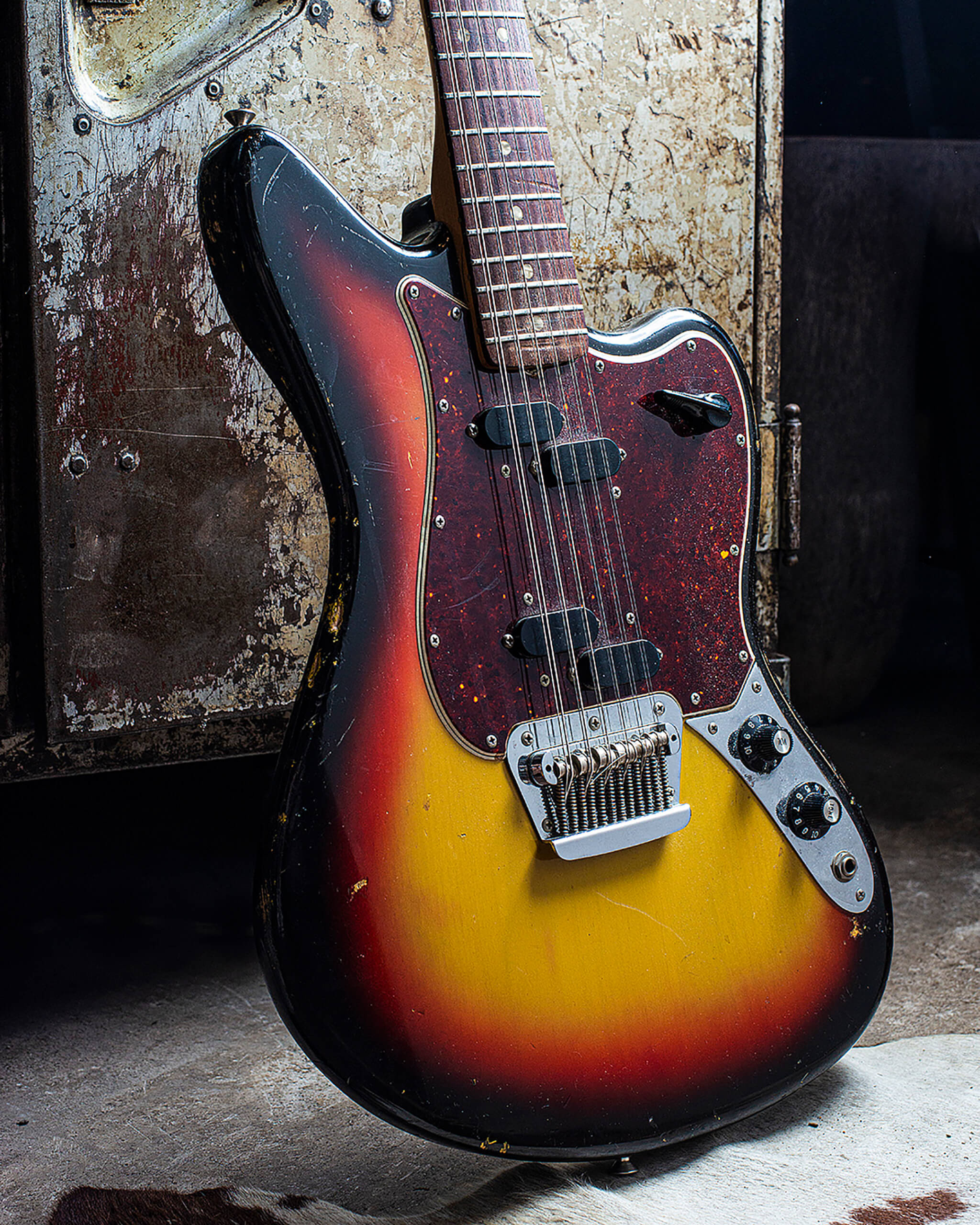The Guitar Interview: Thurston Moore on Jazzmasters, Sonic Youth and his new solo LP
The 62-year-old noise pioneer talks weird tunings, writing “straight up pop songs” and why he can’t separate his songs from the guitars he recorded them with.
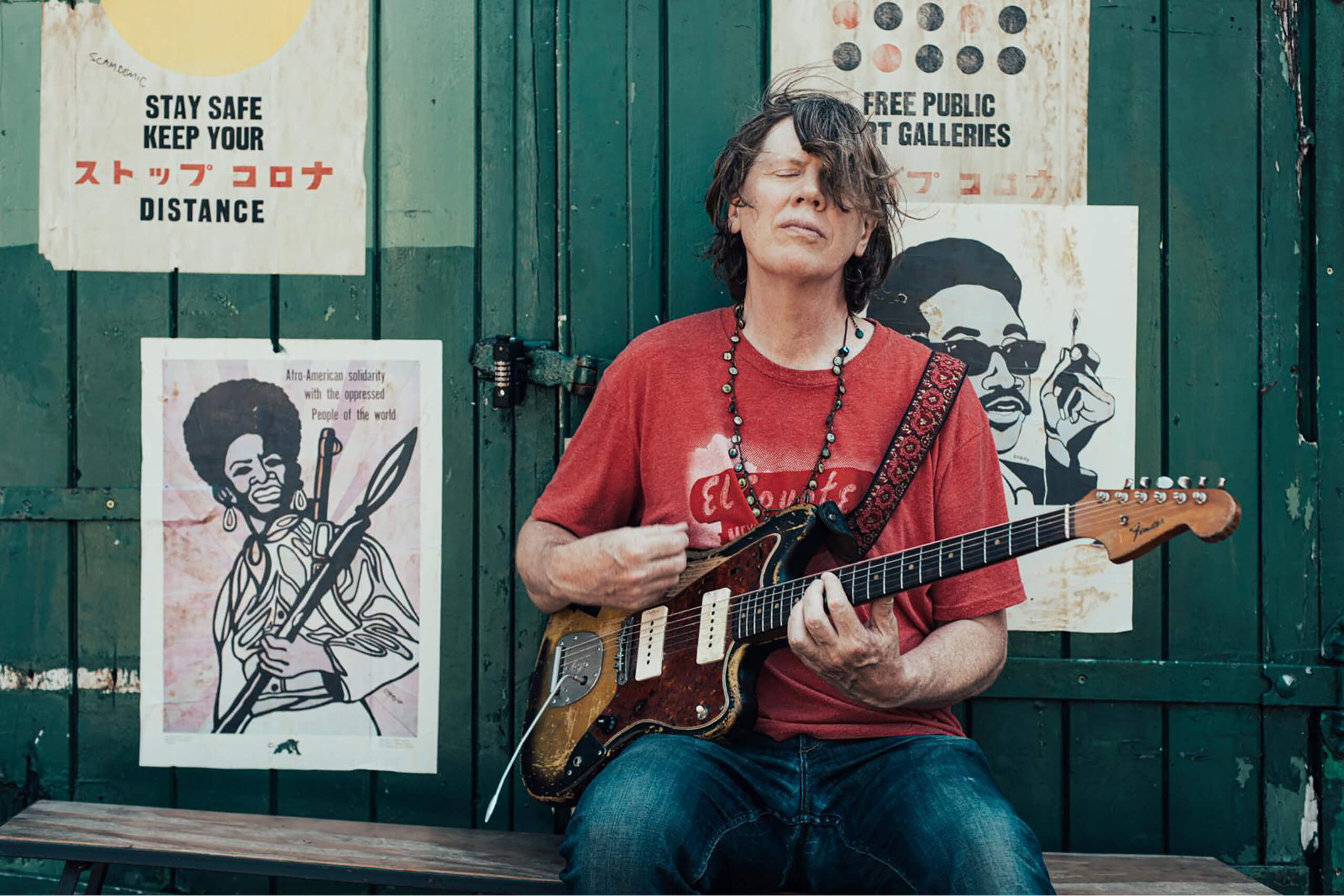
All images: Eleanor Jane
If you are a normal person with a normal job and a normal life, you have not spent all that much time doing the things that Thurston Moore generally spends his time doing. Until recently. Of late Thurston Moore, co-founder of Sonic Youth, terroriser of Jazzmasters, walking building block of modern indie-rock, has been spending a lot of time between four walls, with a guitar in his lap and one eye on the spread of COVID-19 in his adopted hometown of London.
“I’ve loved working on guitar in the privacy of my flat, knowing that I had all these days ahead of me to do that,” he says. “But psychologically it’s a conflict. I’m in a place where I can be creative without the anxiety of having to go out and work, yet the only real revenue I have is from going out and working. I enjoy being in one place, but there’s friction because it comes with this situation where people are susceptible to getting fatally ill on such a scale that it’s almost too strange to believe. You would have to be an NHS caregiver to see the reality of it.”
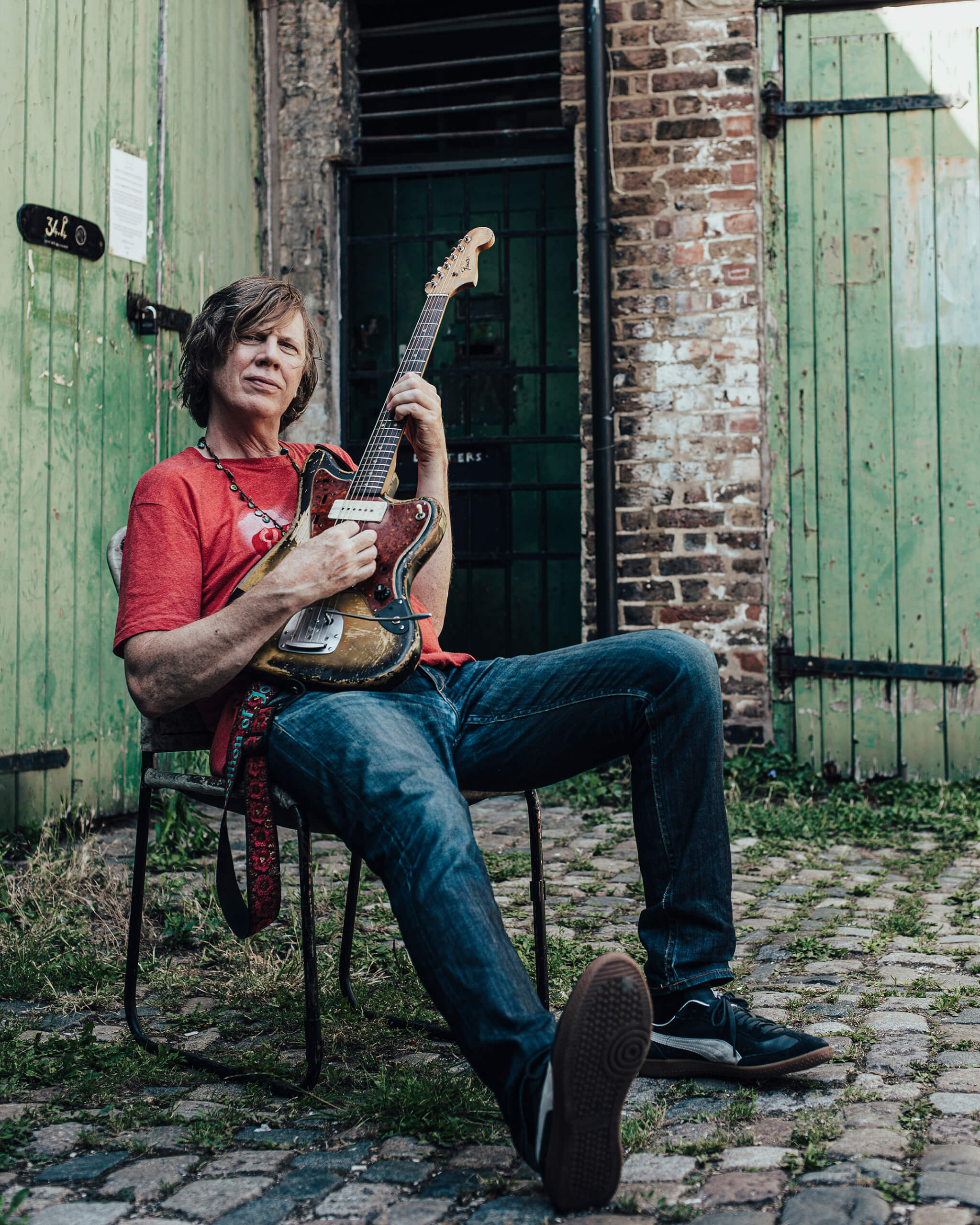
Moore’s new solo record, By The Fire, is intended as a balm of sorts. Let’s not pretend that it’s prophetic or the perfect record for these imperfect times, but close to its heart it has a relevant maxim cribbed from avant-jazz musician Albert Ayler: “Music is the healing force of the universe.” Recorded pre-lockdown, with a few overdubs captured once the world had shifted, Moore can see the uncertainty and anger of the time in the manner he tailored the finished album as much as any individual song.
“The situation with the pandemic, and seeing the uprising of people’s rage in the USA because of the nefarious leadership there, informed a lot of how the record was sequenced,” he says. “The title certainly references that. I wanted it to be about people communicating in a really primal way – sitting around the fire, telling stories, but also about what fire denotes when people take to the streets. They light fires to get attention for the oppression that’s happening. Records are always made in the moment, even if the songs are part of your historical language. They’re always about what’s happening now.”
“If a Sonic Youth guitar goes on the market, completely gutted and rewired, they become these very personalised, iconic items”
By The Fire is a literate reading of Moore’s ambitions and crutches. Backed by My Bloody Valentine’s Deb Googe on bass, guitarist James Sedwards, Jon Leidecker on electronics, lyricist Radieux Radio and Sonic Youth’s Steve Shelley in a drumming job-share with Jem Doulton, he weaves meditative, occasionally meandering, guitar instrumentals together with immediate, hooky indie-rock songs like Hashish, which sounds like a grizzled sibling of Sonic Youth’s Sunday.
“The album starts out very joyful, with proper, straight up pop-rock songs,” Moore says. “I wanted the trajectory to at least go through this period where it gets a bit more complicated. The final piece, Venus, is about sounds coming together through a structure. The guitars go through a very specific sequence of notes, and the only improvisational part is my cueing.
“It’s by feel – the high sixth string, starting on the second fret and moving all the way up to the top of the neck. Then repeat that sequence on the next lowest string. I wanted to have this piece that was all about these continuing ascensions and returns, which encapsulated what was happening musically with all these different ideas. It’s sort of like: ‘Here’s the catalogue of notes used on this record’.”
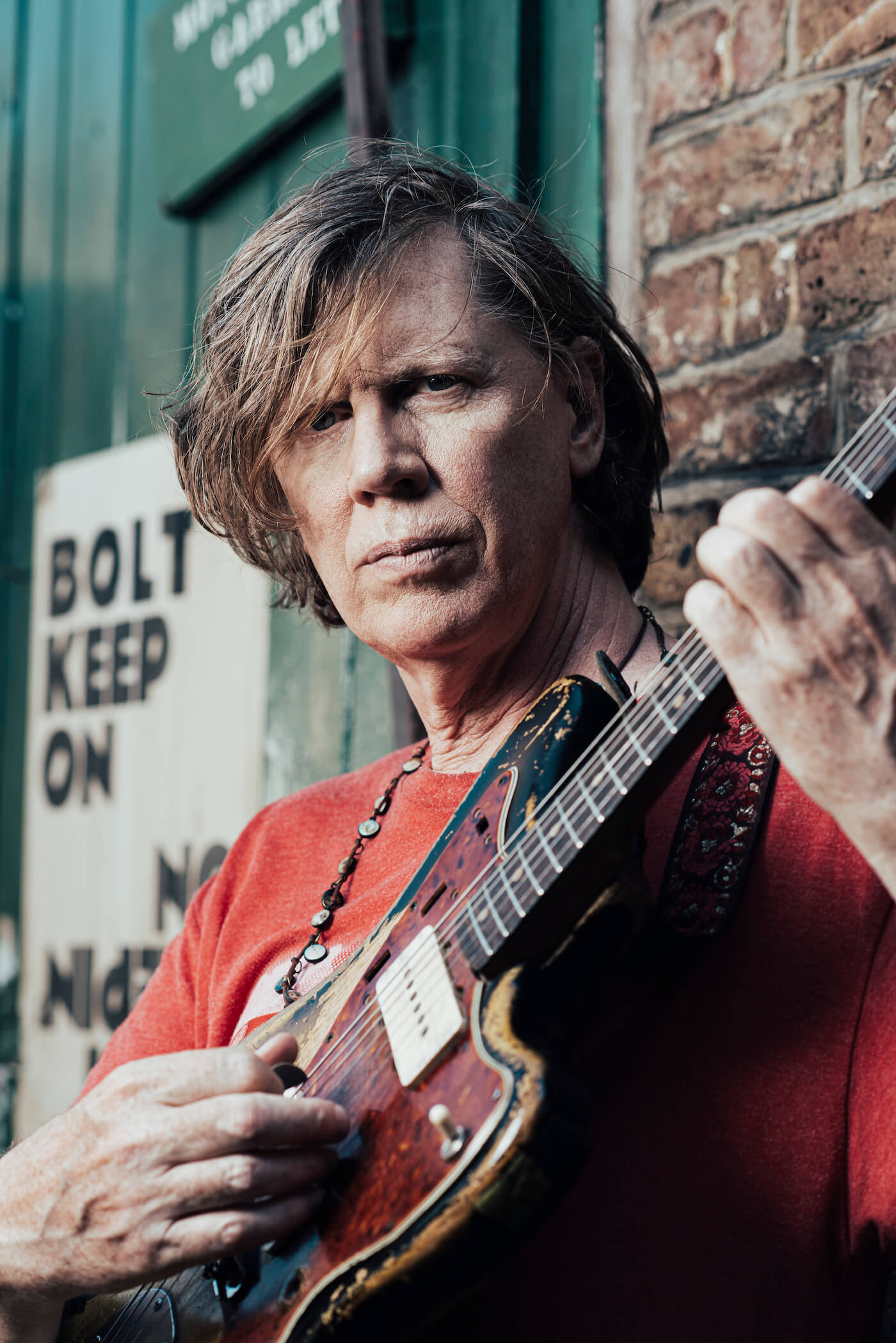
Hit reset
Moore has been undertaking expeditions like this for 40 years. Born in Coral Gables, Florida in 1958 and largely raised in Bethel, Connecticut, he moved to New York City in the late 70s with a white Stratocaster, passed down from his older brother along with a few Hendrix moves, in hand and Louie Louie still ringing in his ears. And not a moment too soon, because in Thurston Moore’s world, punk rock smashed the reset button on everything.
Its arrival immediately drew a line in the sand between before and after that first power chord cleaved its way through his brain. He saw his own tall, unwieldy frame reflected back at him in the form of Joey Ramone, felt the future in the electro mayhem of Suicide. His Zappa and Zeppelin records would moulder in his mother’s basement as he sought out things that were new, newer, newest. In the city he found that on tap, roving out from his apartment amid the gonzo weirdness of the Lower East Side as punk begat new wave, no wave spat back and hardcore windmilled into the conversation.
“The documents were just so incredible,” Moore remembers. “And you could actually buy a seven-inch and a fanzine and not suffer too much from it. Going to a guitar store was all about gawking, maybe playing it and then walking out without anything to show for it. Unless you had deep pockets, it was an excursion in window shopping. To me, the records were what I was getting my guitar education from anyway. You’d hear the first Scritti Politti seven-inch and it was just so odd, or the Slits album and how it was produced by Dennis Bovell. One after the other, from ’77 through to like ’81, it was relentless.”
“Nobody was playing Jazzmasters on the scene at that time. They were considered to be a country and western guitaR”
Into this maelstrom came the avant-garde guitar orchestras moulded and manipulated by composers Glenn Branca and Rhys Chatham. Moore ate up the punishing, confrontational volume of the music, studied their grand plans to build sounds that no one had heard before, and channelled these ideas of perpetual motion and experimentation into his contributions to a new band called Sonic Youth.
“I remember when the Clash first played New York after the second album,” he says. “They didn’t play CBGB or Max’s Kansas City, they played at this big place, the Palladium. Everybody in our world went to that gig. They came out and just tore the roof off the place. The next six months, they came back again. And you know what? It wasn’t the same, because so much had happened since – new ideas and records and bands. There was such an amazing amount of radical things happening that the Clash at the Palladium part two sounded a little too traditional. I was like, ‘I’m gonna go see A Certain Ratio because that’s more interesting right now.’ It was an amazing time. Our band started in the thick of that.”
Leading man
On By The Fire, the instincts he honed in that anything goes world are still relevant. What has changed is the dynamic between Moore and his bandmates. He is a bandleader here in a manner that he never was during Sonic Youth’s tenure, when his interjections were only one part of the puzzle alongside those emanating from the powerful creative minds of bassist Kim Gordon and guitarist Lee Ranaldo.
Their bold brand of art-school anthemics, roiling dissonance and searing cool – which spanned 15 albums, at least five of which qualify as sacred indie-rock texts – was always a collage. Since Sonic Youth’s passing in 2011, with the acrimonious end of Moore and Gordon’s marriage at its heart, he has sought to foster collaborations that feel different.
“From the outset, Sonic Youth was a democratic concern,” he says. “As most young bands are, and should be, it was people coming together to create the sum of their parts. Sometimes it’s really magical – from the Beatles to the Pistols. Some people have stronger egos than others but it’s always about the band. The band is writing the songs as opposed to one chief songwriter. That’s what Sonic Youth always was. All the publishing, all the songwriting is, ‘All songs by Sonic Youth’. It doesn’t matter who wrote the lyrics, who brought the idea in. It’s in the forum of Sonic Youth. I didn’t feel like I needed to experience that again.”
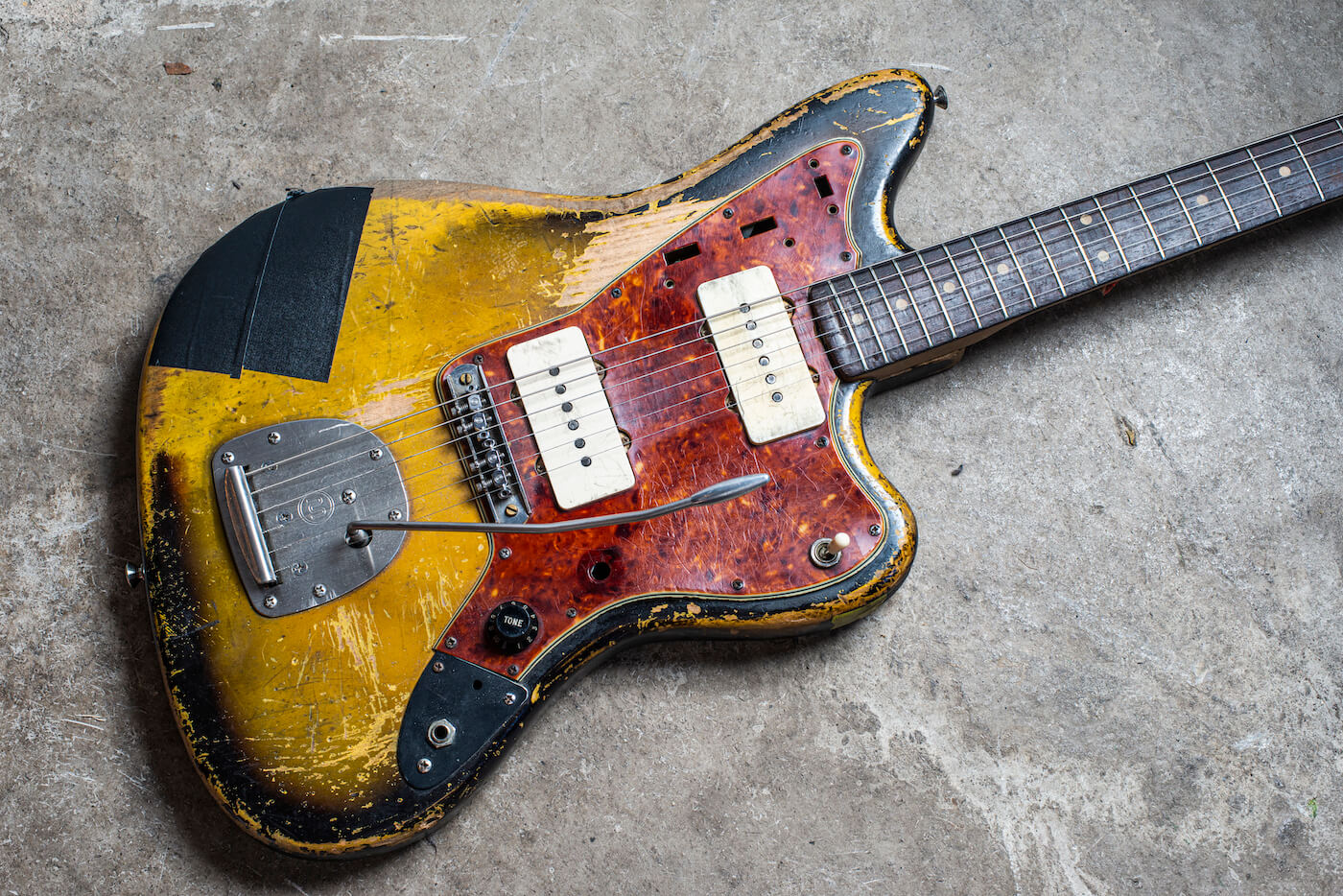
His approach isn’t pernickety, though. It’s still about the songs. “I certainly don’t dictate to Deb Googe what to play on bass,” he adds. “She’s a formidable player, and I want her to play with me because of how she writes her own lines. At first, James was playing in unison with me, but I realised I was underselling him. I can’t play lead guitar in his manner – it’s really high technique, traditional playing. He plays like that effortlessly. But for him, it’s a challenge to work in alternate tunings, and he’s risen to the occasion.
“We’ve grown into hearing each other. I think he feels a little bit more comfortable with moving away from just trying to acknowledge what I’m doing, and that comes with time, spending years together on the road. You can hear that camaraderie in these pieces. It’s quite different to the relationship I had with Lee [Ranaldo] as a guitar player. That can’t be replicated, not that I’d want to. It was too personal. Lee and I spent 30 years growing up together.”
While Moore describes Sedwards’ key influences as “equal value Led Zeppelin and the Fall”, he’s also a Sonic Youth head. And that means that he knew alternate tunings were part of the gig from minute one – the sight of Moore’s hand on a tuning peg has come to mean the same thing as another guitarist working their way into the meat of a solo. As with so many elements of that New York punk scene Sonic Youth’s fascination with tunings – and taking power drills to pickups – sprang from a place that balanced creative abandon with hard facts: their gear was pawn shop junk.
“When I first saw Rhys Chatham and Glenn Branca play, I didn’t know they were playing alternate tunings,” Moore admits. “It wasn’t really until I started playing with them that I was like, ‘Okay, this guitar is all high E strings, and this one is all G strings. I see, you’re making one massive guitar.’ That was very informative and really exciting. When Sonic Youth started the first guitars we had were so cheap and horrible that they sounded terrible in traditional tunings.
“But they sounded great when you put a drumstick underneath the 12th fret to create this noded guitar where you could play either end of it. For the economics of it all, I can’t now have a dozen tunings on a record and go out and have a dozen guitars on the road. In the 90s, when we had such a high profile, Sonic Youth toured in a way that allowed us to travel with two dozen guitars, so we could write in any tuning and your tech would pass you a guitar. I don’t have that kind of comfort zone or privilege anymore.”
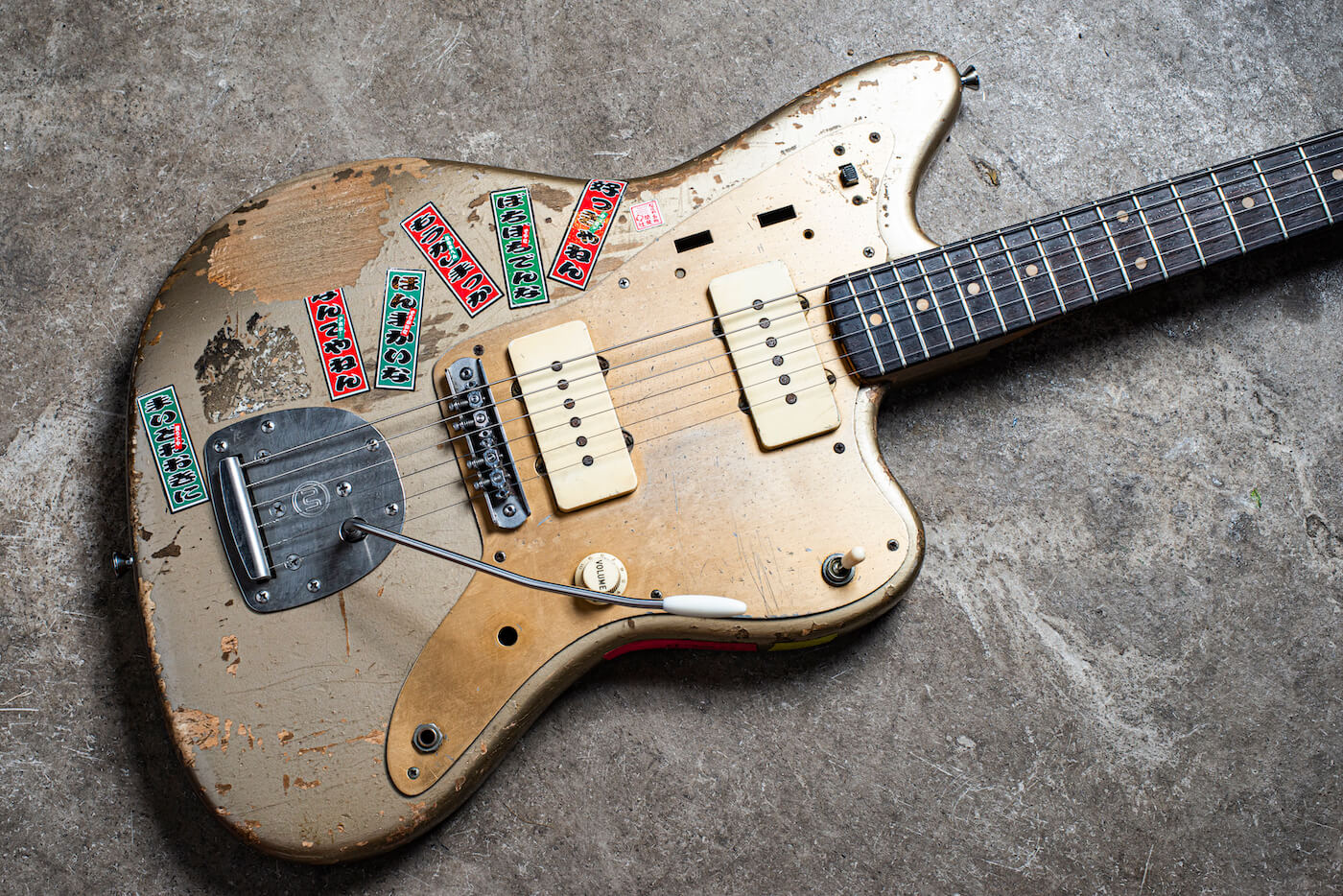
Jazz men
Sonic Youth’s guitar slingers played a huge part in making the Jazzmaster the symbol of alternative guitar cool that it remains today, and Moore and Ranaldo’s dealings with Jazzmasters began in earnest back in the mid-80s. Their sideline in modding them – ripping out electronics, sacrificing switches, and in Ranaldo’s case adding Tele Deluxe pickups to his ‘Jazzblaster’ – began immediately afterwards. Sonic Youth’s guitars quickly became good for nothing except playing Sonic Youth songs. It is one of the most symbiotic relationships between musicians and instruments in rock history.
“The charity shop guitars were just falling apart,” Moore remembers. “Their shelf-life was limited, especially with the way we were treating them. As soon as we had a little coin, I remember going up to 48th Street in Manhattan, where Manny’s Music was and all these iconic stores. We were stepping it up a bit, but not too much. Lee pointed at a Jazzmaster and went, ‘That’s the kind of guitar [Television’s] Tom Verlaine uses.’ That was a selling point right there.
“Nobody was playing Jazzmasters on the scene at that time. We got a couple for next to nothing. They were considered to be a country and western guitar, or some old fogey 50s jazz guitar. We began to modify them when we realised we were hitting these unnecessary switches. We were like, ‘Man, all we need is a toggle switch between the two pickups and a volume knob. We’ll keep the tone knob on its brightest end.’ That’s it. We started digging out all the electronics and soldering them back together again.”
In Sonic Youth’s wake, with waves also made by guitarists including J Mascis of Dinosaur Jr and Kevin Shields of My Bloody Valentine, the Jazzmaster became an indie-rock fixture.
“It was basically a matter of economics that we chose that guitar,” Moore admits. “But the aspects of it were so intrinsic to what we were interested in. We were already noding guitars, and the fact that the Jazzmaster had all this real estate behind the bridge to work with was really good. That’s a whole other instrument right there – a real high register electric guitar string sound. I have a long reach so the Jazzmaster fits my body like no other guitar. There’s nothing else I feel as comfortable with.”
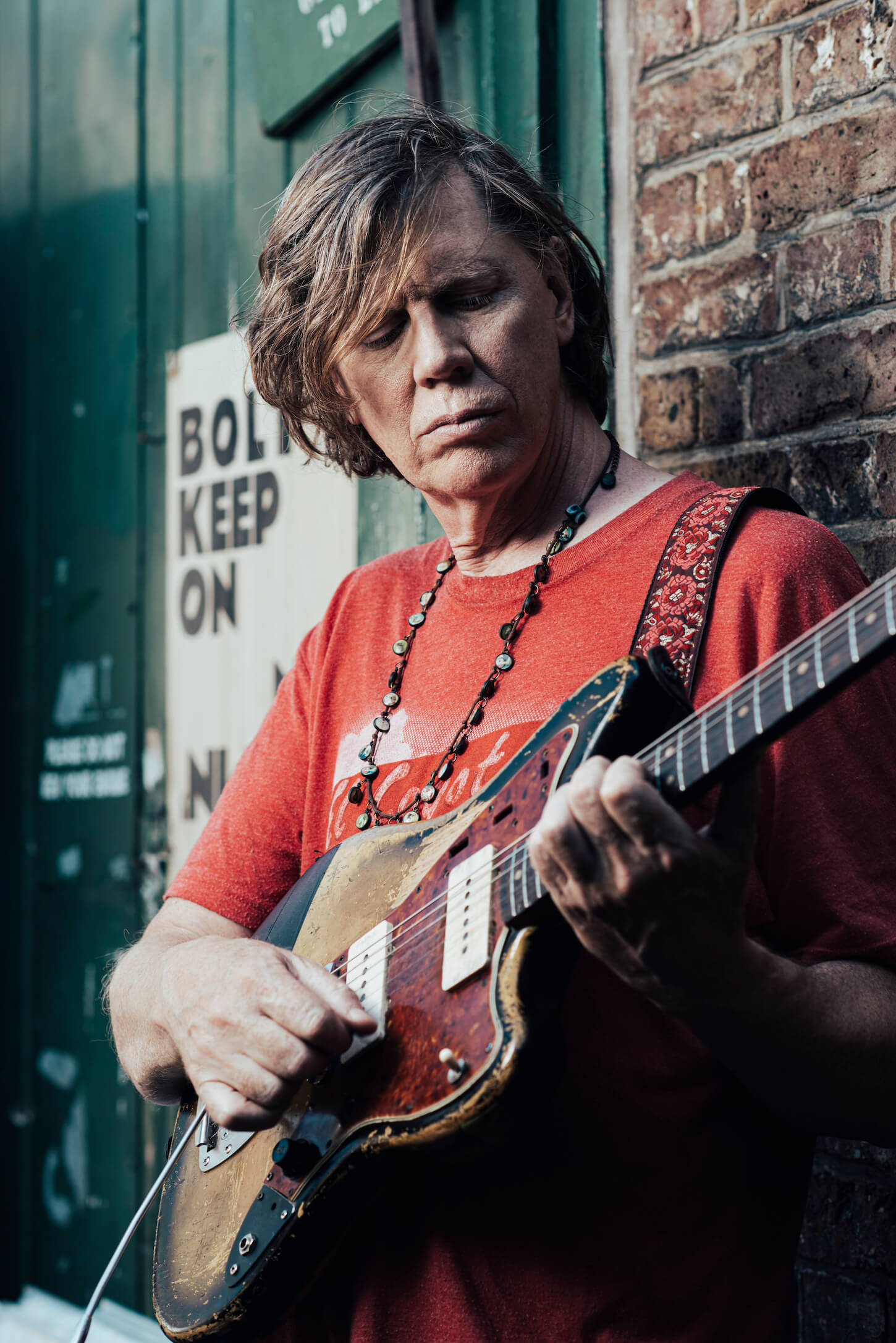
Comfort zones
It should come as no surprise, then, that Moore and Sedwards both leaned heavily on Jazzmasters during work on By The Fire. Moore’s pre-CBS Sunburst was acquired in Sonic Youth’s final throes as a backup before stepping up when the band’s gear was stolen. “It has become what the previous Jazzmaster was,” Moore says. “In the words of Sunburned Hand of the Man founder John Moloney, ‘Excalibur!’”
Sedwards, meanwhile, plays a guitar that is essentially as old as Jazzmasters come. The gold ‘59 model also tumbled into Moore’s possession after Sonic Youth were robbed in a semi-legendary incident in Orange County, California in 1999 (several guitars from the heist have been recovered since, largely thanks to diligent fans). “It was a gift from Patti Smith in sympathy, because they had gotten ripped off as well at some point,” Moore says. “It happens to the best of us. That guitar is really cherished.
“If a Sonic Youth guitar goes on the market, completely gutted and rewired, they become these very personalised, iconic items,” he adds. “It’s a Sonic Youth guitar. Whoever ripped them off, they could take them to a guitar store and they’d probably look at them and go, ‘These guitars aren’t worth anything!’ I hope they’re starting some noise-rock groups.”
Another curio is Moore’s Sunburst Fender Electric XII. It has ties to a piece commissioned by the Barbican in London, which provides added context for By The Fire’s extended workouts while linking back to his earliest days in experimental music. Next to the sunnier side of his new record, this nebulous composition (which was released as part of Moore’s Spirit Counsel box set in 2019) recalls Branca and Chatham as much as it speaks of his place as an indie-rock sage who will always be down to get improvisational.
It underlines the fact that Moore’s guitars are often part of the music: from tunings through to the feedback screaming out of his amp. Living in London, he has collaborated with a host of experienced, daring free improv musicians, sometimes adapting his style to offer a febrile, unpredictable noise counterpoint. The experience has become part of his make up as a player.
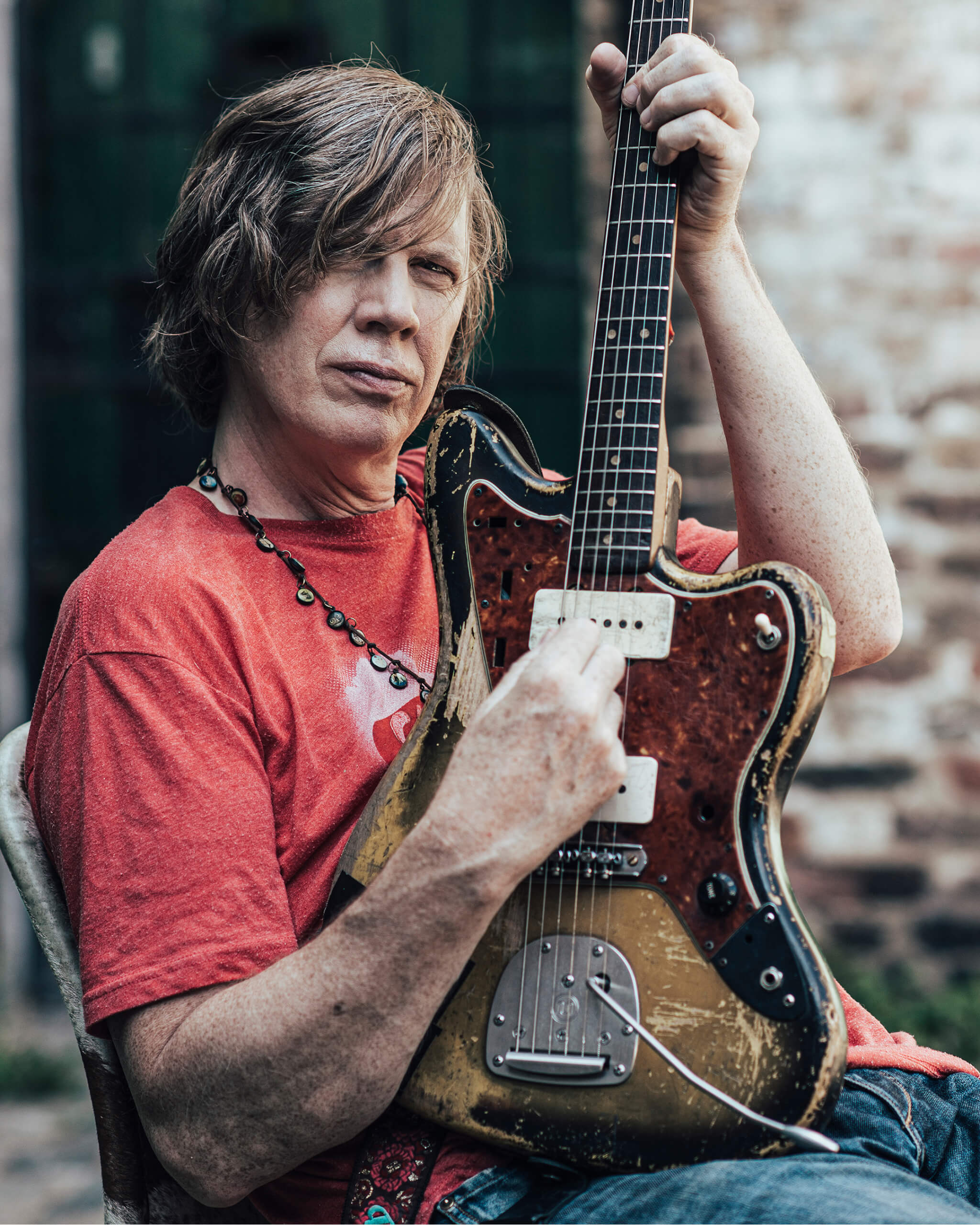
“Knowing that you can present feedback as a spontaneous musical gesture is something that started to become a big part of Sonic Youth’s songwriting at some point,” he says. “That to me is as good as any chord run, or any blues scale. It can have a life of its own, and you’re a bit of a lion-tamer. I can actually manipulate and bend the neck and create things that way. You can engage the guitar physically with the amplifier, creating some slight bends without destroying everything.
“I don’t really know if I ever see the guitar completely as a tool. When I go to a radio station and they want me to play a song, it’s almost impossible. The song that I have is about which guitar is being played. Even if they have some hired Jazzmaster sitting on a guitar stand, the song is going to suffer because of that. It won’t sound right. I have a very personal relationship with the guitars that I play. I never see them as interchangeable.”
Thurston Moore’s By The Fire is out on September 25 through the Daydream Library.

